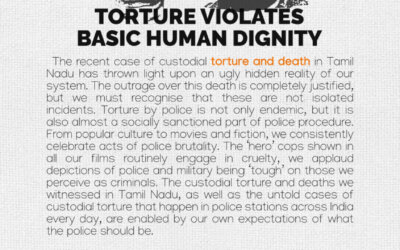 With scam after scam erupting almost daily, it’s time to ask the question: How corrupt is India compared with other countries? Transparency International, which advertises itself as the global civil society organization leading the fight against corruption, has been bringing out an annual Corruption erceptions Index (CPI) since 1995,which ranks countries according to the perception of corruption in the public sector. The scale ranges from 10, which is extremely clean, to 0, which is extremely corrupt.
With scam after scam erupting almost daily, it’s time to ask the question: How corrupt is India compared with other countries? Transparency International, which advertises itself as the global civil society organization leading the fight against corruption, has been bringing out an annual Corruption erceptions Index (CPI) since 1995,which ranks countries according to the perception of corruption in the public sector. The scale ranges from 10, which is extremely clean, to 0, which is extremely corrupt.
According to the 2010 CPI, India has a score of 3.3. That indicates a comparatively high level of corruption, as expected. But among countries in the neighborhood, China has a score of 3.5, Pakistan 2.3, Bangladesh 2.4, Nepal 2.2 and Sri Lanka 3.2. Afghanistan and Myanmar are at a very low 1.4. The recent outbreak of scams would undoubtedly have worsened perceptions about corruption in India and
our score will probably be worse if a survey is conducted right now. Nevertheless, the score does suggest that India is not too badly off compared with other countries in our immediate neighborhood.
The least corrupt countries, according to the survey, are Denmark, New Zealand and Singapore, all with scores of 9.3. The US has a score of 7.1. Asian nations with low levels of corruption, apart from Singapore, include Hong Kong, with a score of 8.4, Japan with 7.8 and Qatar with 7.7. Does the level of corruption have a link to the standard of living? There’s a strong correlation, with the rich countries
having low levels of corruption. There are plenty of similarities between the corruption rankings and the ranks of countries in the United Nations Development Programme’s Human Development Reports. Among the Asian countries, for example, Singapore, Qatar, Hong Kong and Japan all figure in the very high human development category in the latest Human Development Report. Perhaps, as countries develop, the demand for cleaning up the system increases, just as there’s a demand for better infrastructure, better schooling, better neighborhoods, etc.
This is also borne out by history. Cities in the US were much more corrupt at the turn of the twentieth century than they are now. At the other end of the scale, there are countries mired in civil strife or under oppressive regimes that are at the bottom of the corruption list. Not surprisingly, the most
corrupt countries at the bottom of Transparency International’s 2010 table are Iraq, Afghanistan, Myanmar and Somalia. (The decline of Iraq and Afghanistan is mainly due to war and Somalia due to suffering of civil strife their points in previous years were much better then their current standing — Ed.) But that is obvious. It is the exceptional cases that are interesting. For instance, among the developed countries, Greece scores just 3.5 on the corruption index. That indicates it is as corrupt as China. What’s more, it’s behind Rwanda, which scores 4 and Ghana, with a score of 4.1.
Can Greece’s fiscal woes have a link to this unprecedented level of corruption for a developed country? Similarly, although Italy ranks number 23 in the Human Development Report, its score is a lowly 3.9 in the CPI. Among Asian countries, although South Korea ranks number 12 in the Human Development index, its rank in the corruption index is much lower, at number 39.
On the other hand, Botswana, which has a lowly rank of 98 in the Human Development index, below Sri Lanka and the Philippines, has a score of 5.8 in the CPI, beating countries such as Poland, Hungary and South Africa. The data seem to suggest that while it’s true that there is a correlation between the standard of living in a country and its level of corruption and it would be broadly correct to say that development reduces corruption, there are also exceptions to this trend.
But if development lowers corruption, there seem to be few signs of it happening in India, where the number of scams is not only increasing but they also seem to be getting bigger. Transparency International’s surveys over the years, however, seem to suggest there has been some improvement. For instance, in 1995, when the surveys first started, India’s score was 2.78. It remained at 2.8 in 2000.
By 2005 it was at 2.9, again not much of an improvement. But by 2006, India’s score had improved to 3.3, the same level as it is now. In 2007, the score had gone up to 3.5, so the current score is a decline since then.
Corruption also doesn’t really seem to have an impact on either growth or foreign investment. China and India have scores of 3.5 and 3.3, respectively, on the CPI, but attract plenty of foreign funds and are two of the fastest growing countries. Indonesia and Vietnam, other investment hotspots, have scores of 2.8 and 2.7, respectively. And among the other BRIC nations so loved by investors, Brazil scores 3.7 while Russia’s is an abysmal 2.1.
There is, however, one country in our neighborhood that has done far better than us in the corruption index. Bhutan ranks 36 on the index, with a score of 5.7. In Asia, it’s the fifth least corrupt nation, after Singapore, Hong Kong, Japan and Taiwan. In contrast, India ranks No. 16 in the region. True, we may not be able to learn much from Bhutan, given the very dissimilar sizes, social structures and economies of the two nations, but it does show that economic backwardness is no reason for large-scale corruption.




0 Comments